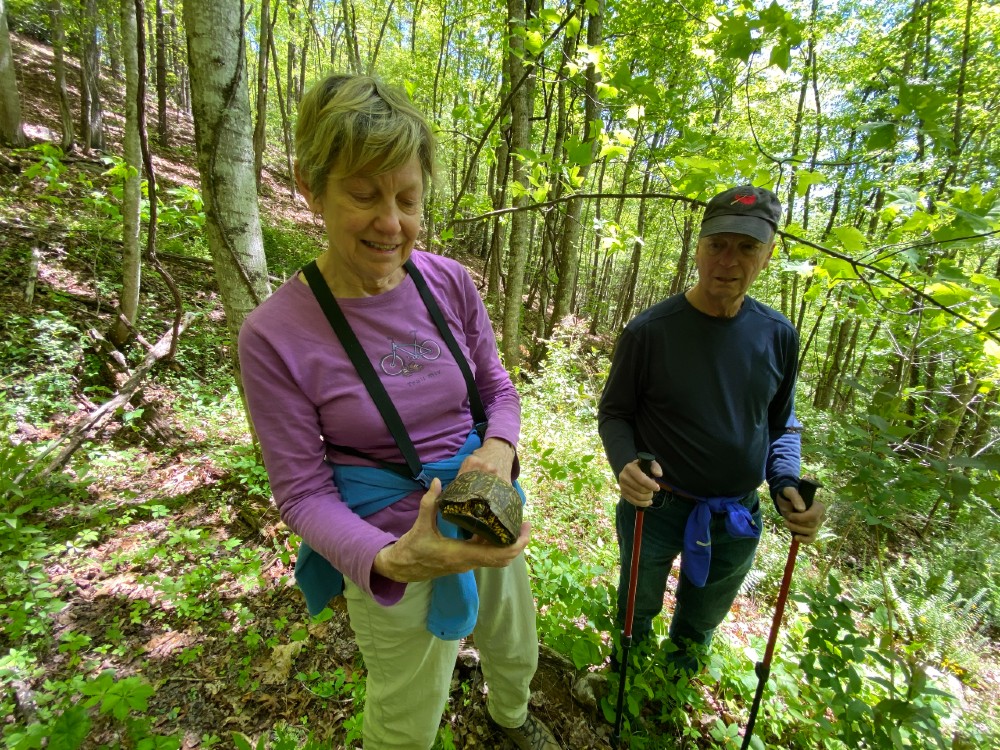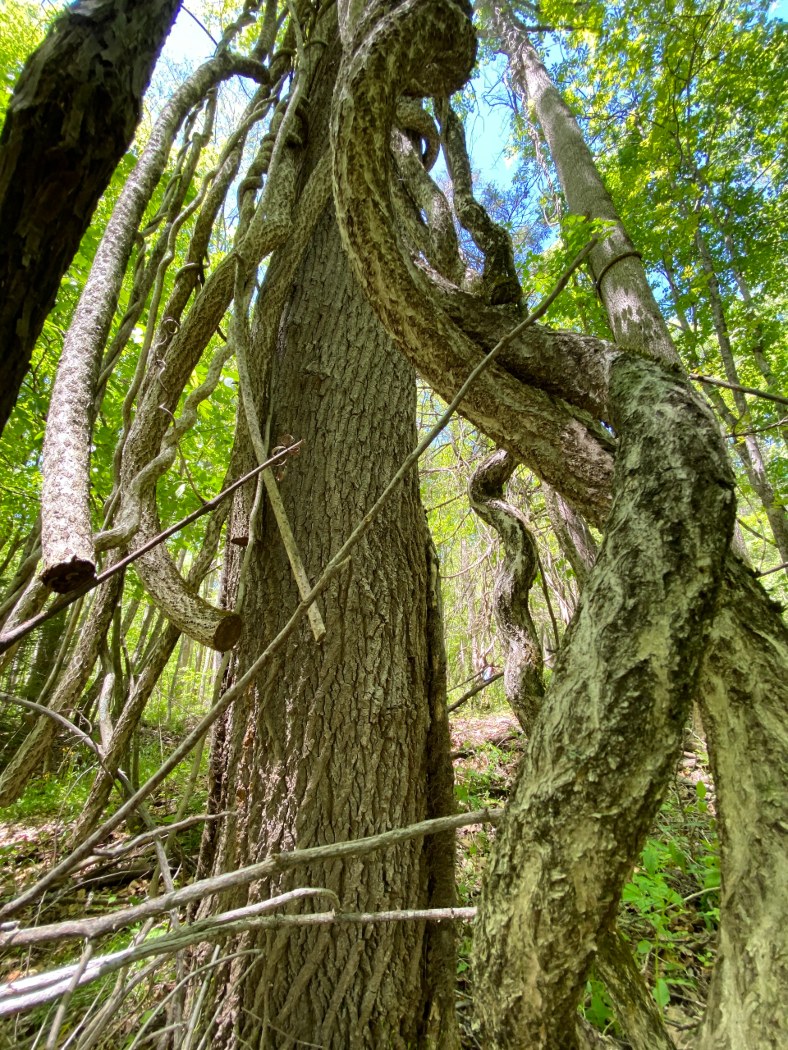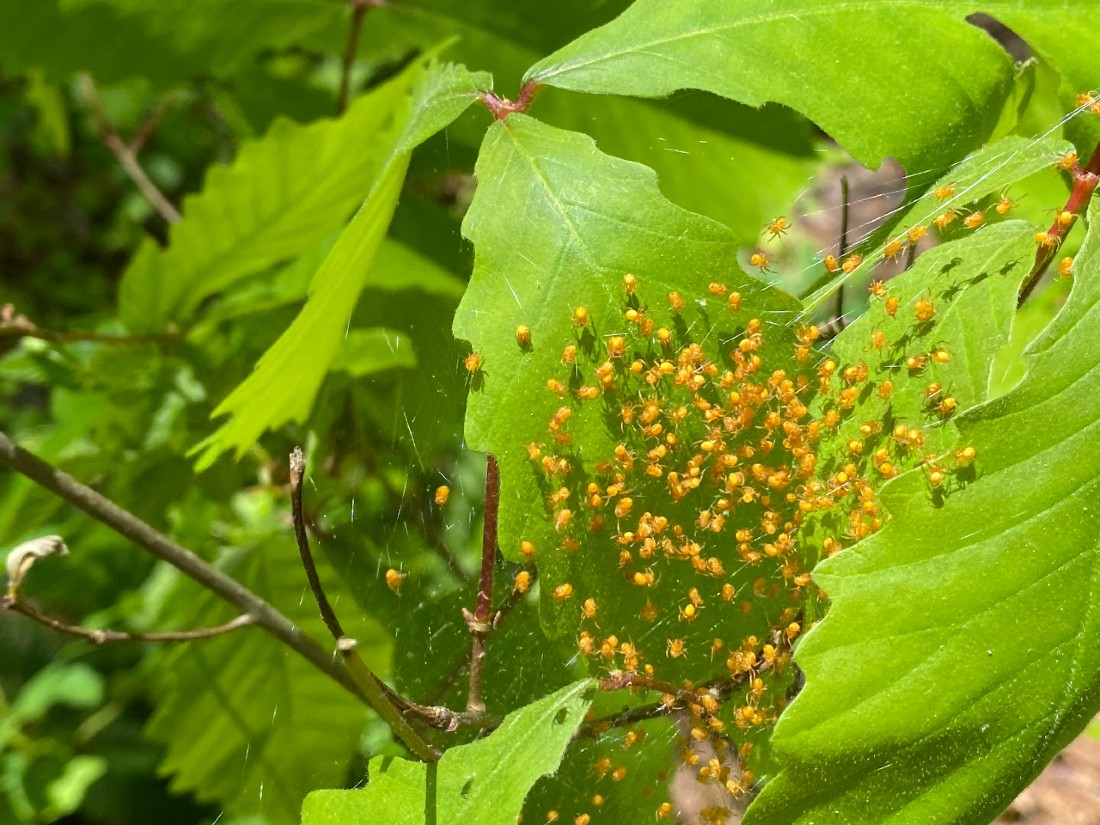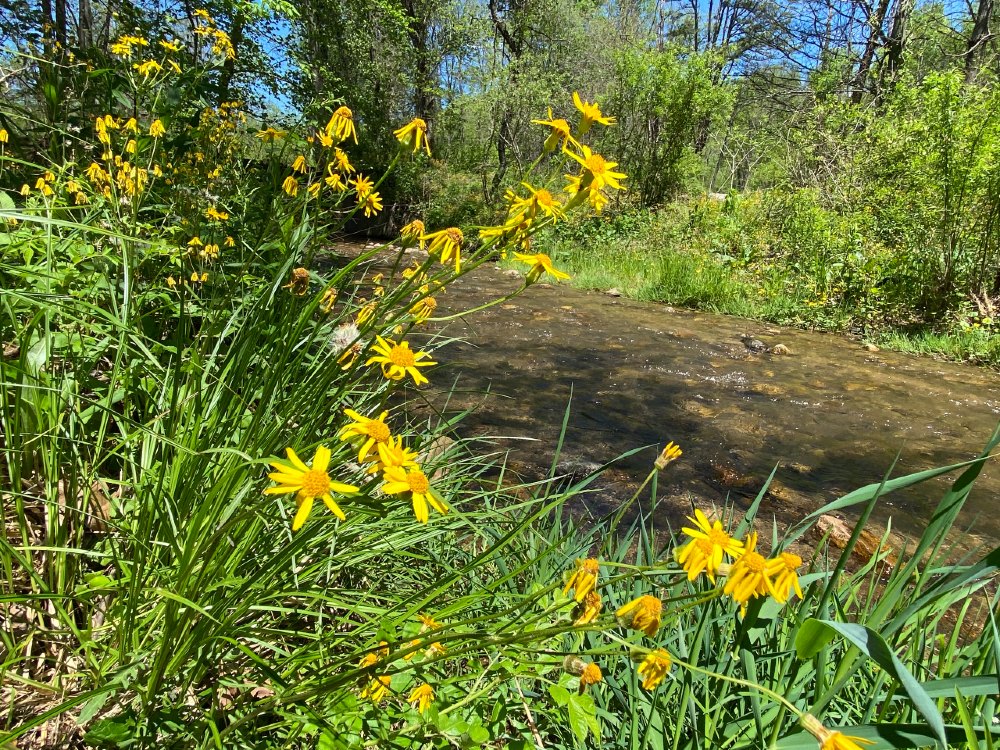Deep Roots in a Family Forest

Samuel McBrayer was a newcomer in the land of the Catawba and the Cherokee when he applied for a land grant in Buncombe County in 1792. Two years later, at the age of 23, he was granted 300 acres. But for over a year, he didn’t build any kind of dwelling on his land. Instead, he sheltered under an overhanging rock and earned the nickname Samuel Rooter—living low to the ground and taking hold, like a root.
Land was important to many Scots-Irish immigrants, says his descendent Elaine Spicer Friebele. Her great-grandfather, Fletch McBrayer, was Samuel’s grandson. Fletch believed so strongly in the value of land that he kept buying it throughout his life. When he died, he was able to pass on land to each of his four children. One of those was Elaine’s grandmother, Levia McBrayer.

Levia was born in a log cabin on the farm that she later came to inherit. She passed on a love of this place to her daughter and to her daughter’s daughter, Elaine.
Elaine has written about this family land, “In Fairview, the land sloping down from Dyeleaf Mountain to rich bottomland bordering Garren Creek near the Pleasant Grove Baptist Church, is imprinted on my memory—and my heart.”
Her grandmother would tell her stories about growing up there. Elaine writes:
“Mammy, as I called my grandmother, told me she milked eight cows every morning when she was eight years old. She and her sister, Octavia, helped her mother make soap and candles, launder clothes and bedclothes in big tubs over an open fire, and spread the wash over bushes beside the house to dry. Their hands were never idle, knitting socks as they sat on the porch in the evening air. On Sundays, they prepared big dinners of fried chicken, ham, biscuits, potato salad, corn, greens, cornbread, and cake for the many folks that Fletch invited to come by after church.”

Elaine grew up in Brevard, but would visit the farm in Fairview where she and her brother would help with farm chores and play in the creek.
“My grandmother always said she never wanted it sold, she never wanted it developed. My mother really wanted to follow through on that and I think she felt the same way,” Elaine says.
In 2009, her mother, Alma Spicer, permanently protected the land with a conservation easement through Conserving Carolina.
Today, this land is owned by Elaine, her brother Steve Spicer, and their families. And they are carrying on the family’s legacy of conservation by restoring the health of the forest.
From Pine Plantation to Living Forest

When Elaine and Steve inherited these woods, they were far different from the diverse, native forest that Samuel McBrayer would have found. What they had was a white pine plantation—a monoculture of of aging, densely planted trees that shaded out most other life.
Torry Nergart, Conserving Carolina’s conservation easement manager, says that parts of the property were dominated by just a few plants. “They had white pine, invasive bittersweet and mulitflora rose, and an understory of poison ivy. That’s it.”
Elaine’s parents were following the conventional wisdom when they planted white pines. A couple generations ago, landowners were advised to grow white pine because the trees grew fast and yielded a profitable harvest.
Generating income from the land is important to the current owners as well, but they see another way of doing it. Guided by a mangement plan from Helia Environmental, they are restoring the native diversity of the forest. In fact, they have turned things around so much that their forest is now certified as sustainable through the Rainforest Alliance. Trees harvested from their land can be made into FSC (Forest Sustainability Council) certified paper products, which are sold at a premium.
Lloyd Raleigh, the director of Helia Environmental, says that they could see that many native species were trying to grow. So, they started out by cutting white pines to give the young trees some light. At the same time, they left enough shade to cool the creeks and keep sun-loving invasive plants in check. They hired a contractor, Nick Rose, to control invasive species like bittersweet and multiflora rose.

Lloyd says, “It’s going to take a while to establish but I just went back there to look and the amount of native species that are recolonizing the area is great. It’s amazing. You’re starting to see the rich arrangement of native trees that would naturally grow here.”
Oak, sycamore, willow, walnut, ash, box elder, sassafras, poplar, and maple trees are all coming up. Meanwhile, sustainable timber harvests can cover the costs of management and generate income.
Lloyd says, “It could be something for other landowners look into, because so many people have white pine plantations dating back to that era which could benefit from similar management.”

A Walk in the Woods
Elaine had pictured retiring on their family land, but she and her husband Joe Friebele raised their two sons in Maryland and they still live there. So Elaine and Joe live near Washington, D.C., close to their kids and grandkids. But they come back to visit the land Elaine knew as a child.
This May, she and Joe walked the land with Torry, Conserving Carolina’s conservation easement manager.
The easement on their land ensures that 161 acres will never be developed and that the land is managed with good stewardship practices. Each year, Conserving Carolina monitors all properties that it holds easements on, to ensure that conservation promises are being kept. In all, Conserving Carolina has helped protect over 46,000 acres, including more than 260 conservation easements.

This routine monitoring visit was also a guided nature walk. Torry is an expert naturalist who pointed out unusual species of trees, such as butternut (a.k.a. white walnut), American hazelnut, and alternate leaved dogwood. He identified birds in the canopy by their calls, including black-throated green warbler, vireo, phoebe, and chickadee.
For her part, Elaine—who has always loved nature—is an ecologist and science writer by profession. When Joe found a box turtle, she identified it as a male by his shape. She measured the turtle’s long life by counting ridges on his shell.

Walking the land, they found blooming pink ladyslippers and showy orchids. Fat tadpoles wriggled in a pool of water. The banks of Garren Creek were bright with golden ragwort and when Elaine looked under the river rocks, she found a stonefly nymph—a staple food for trout. They’re also a sign of good water quality.
You can thank the forest for that—and for so much more. Forests create the world around us, even when we’re not there among the trees. Our water, air, and climate all depend on our forests. Forests manage the flow of water through the landscape, so that both floods and droughts are less severe. Tree roots hold soil in place, so our waterways are less polluted. Trees breathe in carbon dioxide and breathe out oxygen, giving us fresh, clean air. They help stabilize our climate by taking carbon from the atmosphere, and storing it as wood and in the living forest soils.
A forest like this one can give us wood and paper—as well as turtles, butterflies, vireos, and orchids. With careful stewardship, this family forest promises to offer these gifts for generations yet to come.

Rose Jenkins Lane is the communications director of Conserving Carolina, a nonprofit land trust based in Hendersonville. Conserving Carolina relies on the support of our members and volunteers to protect, restore, and inspire appreciation of the natural world.